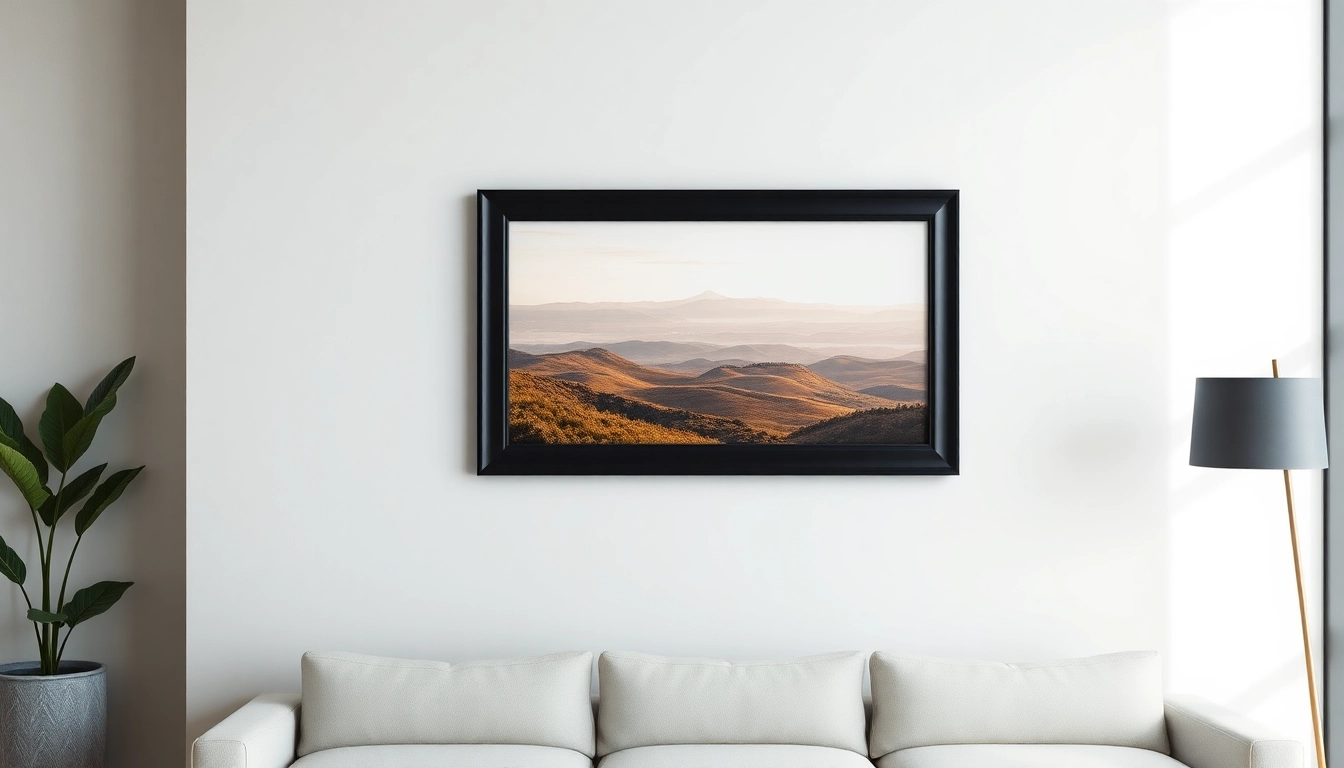Understanding the 20×30 Frame Size
What is a 20×30 Frame?
A 20×30 frame is designed to hold images that measure 20 inches in width and 30 inches in height. This size is often classified under the “poster frame” category due to its ability to showcase large prints, advertisements, and art with an impressive visual impact. Whether used for photographs, artwork, or posters, the 20×30 frame is versatile enough to fit in various environments, including homes, offices, and galleries.
Common Uses for 20×30 Frames
The 20×30 frame is a popular choice for several applications:
- Poster Displays: Whether for movies, concerts, or events, posters are commonly displayed in 20×30 frames for their eye-catching size.
- Art Prints: Artists often use this frame size to highlight their work, making it an excellent choice for art exhibitions.
- Photography: Large family portraits or landscape photographs can be beautifully showcased with adequate framing.
- Diplomas and Certificates: Many educational institutions provide diplomas in this size, and a frame helps preserve and present them professionally.
Dimensions and Measurements Explained
It’s essential to understand that the actual dimensions of a 20×30 frame often exceed the dimensions of the artwork they are meant to hold. Typically, the finished size of a 20×30 frame may be around 22×32 inches, accounting for the frame’s borders.
The matting options you choose can also affect the overall dimensions. For instance, if you include a mat that adds a uniform border around your artwork, the necessary frame size would need to accommodate those additional measurements. Knowing these details will prevent any unpleasant surprises during the framing process.
Choosing the Right Material for Your 20×30 Frame
Wood vs. Metal: Pros and Cons
When selecting a frame material, two popular options present themselves: wood and metal. Each material come with its unique benefits and drawbacks:
- Wood Frames:
- Pros: Warmness, variety of finishes, and natural aesthetics.
- Cons: More prone to warping over time and may require regular maintenance.
- Metal Frames:
- Pros: Durability, modern appeal, and resistance to wear.
- Cons: Less variety in finishes and potential coldness in style.
Consider the overall decor style of your space when choosing between wood and metal. If you desire a warm, rustic look, wooden frames might suit you best. On the other hand, if your decor leans toward contemporary and minimalist aesthetics, a metal frame could be the ideal choice.
How Frame Material Affects Decor
The choice of frame material can significantly influence the ambiance of a space:
- Wood frames
- Metal frames
For a home that presents an eclectic mix of styles, consider combining both materials. For example, incorporating metal frames for more modern art pieces while using wood frames for classic photography can help create a balanced look without sacrificing aesthetics.
Best Finishes for 20×30 Frames
Finishes can pull together a room’s design and offer varying effects:
- Matte Finishes: These provide a subtle, understated look that distracts less from the artwork.
- Glossy Finishes: These coatings enhance color depth and vibrancy, making them suitable for artworks that need a striking impression.
- Distressed Finishes: For rustic and vintage styles, weathered finishes add character and charm.
Ultimately, the finish selected should complement not just the frame, but also the surroundings and the artwork it encloses.
Styling Your Space with 20×30 Frames
Placement Tips for Maximum Impact
To ensure your 20×30 frames make a statement:
- Eye Level Hanging: Hang frames at eye level to give viewers the best visual experience. The typical eye level is around 57-60 inches from the floor.
- Symmetrical Arrangements: For a clean and organized look, arrange frames in uniform patterns.
- Varying Heights: When displaying multiple frames, differing heights can create a more dynamic and visually interesting display.
Creating a Gallery Wall with 20×30 Frames
A gallery wall featuring 20×30 frames can be a stunning focal point in a room. Here are steps to achieve this:
- Choose a Theme: Whether it’s family photos, travel memories, or abstract art, having a common theme will unify the gallery.
- Layout Planning: Lay the frames on the floor first to visualize your arrangement. Consider using painter’s tape on the wall to outline the intended placement.
- Mix Frame Types: Using a combination of different frame styles or colors can add interest, but ensure they complement one another to avoid a chaotic appearance.
Complementary Decor Ideas for Framed Art
To complement your 20×30 framed art, consider the following:
- Accent Furniture: Stylish furniture pieces, like a side table or a console, can complement the artwork and create a cohesive look.
- Lighting: Use spotlights or wall sconces to highlight frames and draw attention to them, especially in dimly lit areas.
- Color Coordination: Choose decor items, such as cushions or rugs, in colors found in the framed artwork to tie the room together.
Buying Considerations for 20×30 Frames
Where to Purchase Quality 20×30 Frames
You have several options when it comes to purchasing 20×30 frames. Here are some reliable sources:
- Online Retailers: Websites like Amazon, Walmart, and specialty framing sites like ArtToFrame provide an extensive selection of frames.
- Local Craft Stores: Stores such as Michaels or hobby shops often carry frames and may allow you to examine them physically.
- Custom Frame Shops: For unique or specific needs, custom framing offers tailored solutions, such as specific matting or specialized glass.
Budgeting for Your Ideal Frame
When budgeting for a 20×30 frame, consider the following factors:
- Material Costs: Wood frames typically range between $20-$100, while metal options can range from $30-$150, depending on finish and brand.
- Custom Features: Custom matting, glass treatments, and special sizes can increase the overall cost.
Assessing what your budget allows from the start can guide your material choices and design decisions more effectively.
Online vs. In-Store Shopping for Frames
Each shopping approach presents its unique advantages:
- Online shopping: Offers convenience and a wider selection, with user reviews to guide your purchase.
- In-store shopping: Provides the advantage of seeing the frame in person, allowing for immediate assessment of quality and material.
Choosing between online vs. in-store is ultimately about personal preference. If you adore hands-on shopping, visiting stores may give you more confidence in your selection.
Maintenance and Care for 20×30 Frames
How to Clean and Preserve Your Frame
To maintain the integrity of your 20×30 frame:
- Dust Regularly: Use a soft cloth or a duster to remove dust, ensuring you avoid scratching the frame.
- Use Appropriate Cleaners: For glass surfaces, use a glass cleaner and a microfiber cloth. Avoid harsh chemicals that may damage the frame finishes.
- Store Properly: If you need to store frames, keep them upright in a dry environment to prevent warping.
When to Replace a Frame
It’s vital to know the signs indicating when a frame should be replaced:
- Damage: If the frame has cracks, warps, or is missing pieces, replacement is necessary.
- Outdated Styles: If your decor has changed dramatically, you might want to replace frames to align with your new aesthetic.
Regularly reassessing your framed items ensures your space remains cohesive and appealing.
Protecting Your Artwork within the Frame
Taking steps to protect your artwork will maximize its lifespan:
- UV Protective Glass: This type of glass can prevent fading from sunlight and preserve your artwork’s vibrancy.
- Matting: Include a mat to help keep the print away from the glass, preventing moisture accumulation that can damage the piece.
By carefully selecting protective measures, you can keep your artwork safe and ensure it remains visually impactful over time.


